
In recent decades, the Icelandic capital, Reykjavik, became peppered with a growing number of quaint architectural works, a testament to its cultural transformation. Standing out among the dozens of newly built landmarks, Thufa, or Þúfa as it's locally known, is an oddly shaped hillock in Grandi, one of the city's trendiest districts. While this grassy knoll might seem utterly unassuming, it bears an interesting story that resonates with Iceland's history and culture.
The easiest way of getting to Thufa is by following the coastal esplanade along Norðurslóð Street in Reykjavik’s Grandi district. Encompassing the entire city’s harbor area, Grandi has been undergoing a tremendous shift in recent years, where fashionable cafés, restaurants and art galleries pop up alongside the piers and fish processing plants.

photography by: Omri Westmark
As you walk southwards along the promenade, the verdant mound unexpectedly looms behind a large white hangar, waiting to be discovered.

photography by: Omri Westmark
Tucked away behind the HB Grandi fish processing factory, the green structure merges with its surrounding manicured lawn.
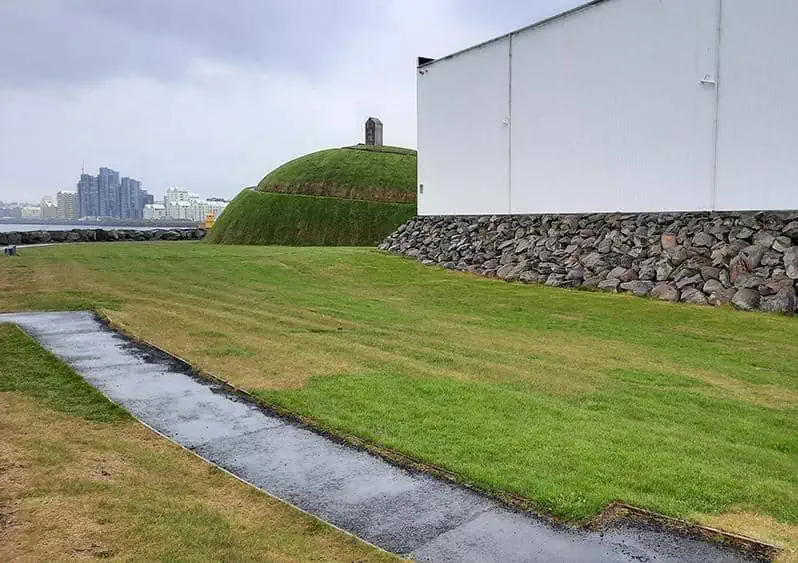
photography by: Omri Westmark
Once past the large industrial building, you’ll come across Þúfa at its fullest glory. This 8-meter-tall hillock was designed in 2012 by the renowned Icelandic artist, Ólöf Nordal, who aspired to create a place for meditation and self-reflection. Inspired by natural hilly formations, the mound serves as a bridge between the country’s modern capital and its surrounding sheer wilderness, as stated by the artist himself.
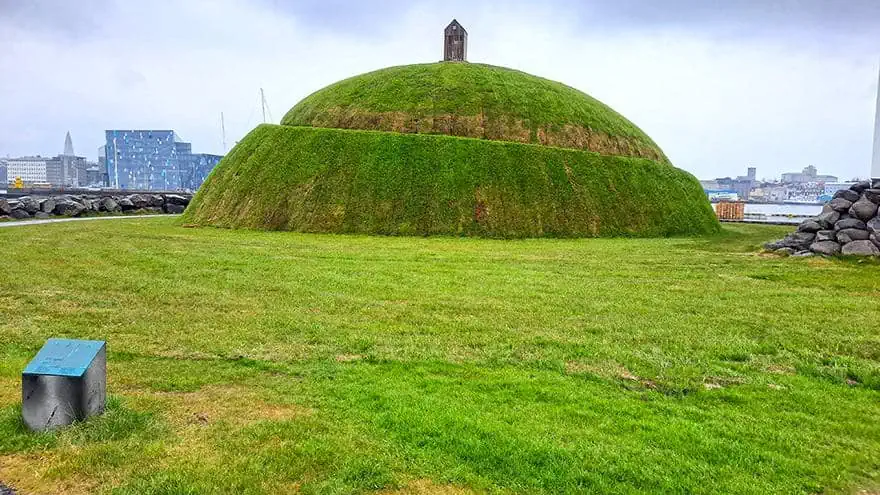
photography by: Omri Westmark
This artificially made hill is practically a pile of a whopping 4,500 tons of dry stone and gravel, neatly covered by rectangular strips of Icelandic grass. Interestingly, it is Thufa’s immediate neighbor, HB Grandi fish processing plant, that set up and funded the artist competition in which the current design has won.

photography by: Omri Westmark
A narrow pathway encircles the hillock and provides visitors with access to its top.

photography by: Omri Westmark
When ascending to the top of the mound, caution is warmly advised as the walkway has no railings and thus, any wrong step can lead to a quick slip downhill.
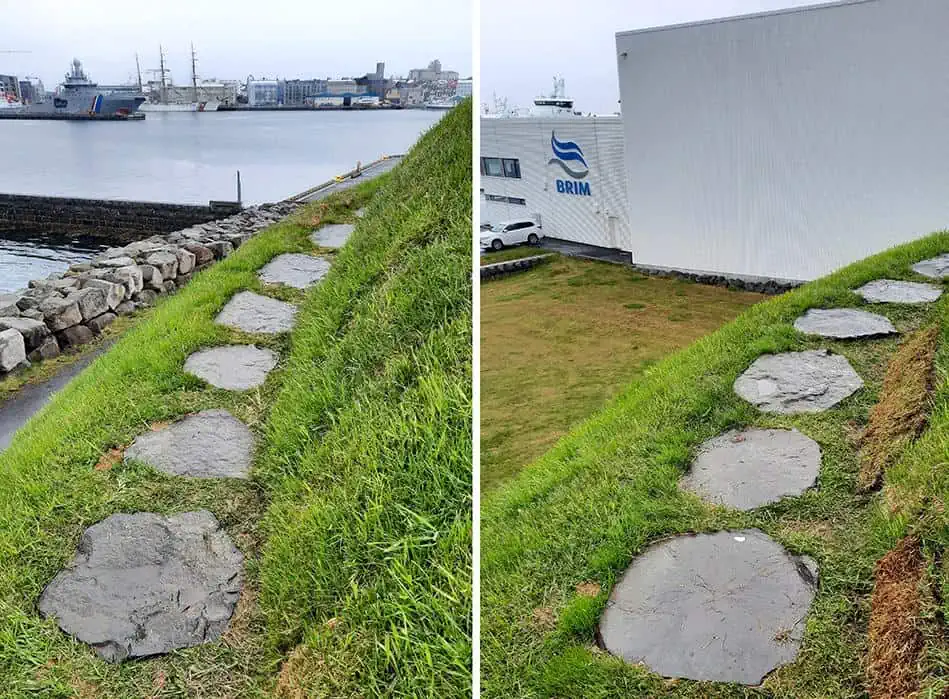
photography by: Omri Westmark
The grassy knoll is crowned by a small wooden shed that is traditionally used for drying fish, a centuries-old local custom which is deeply rooted in the rural lifestyle across Iceland.
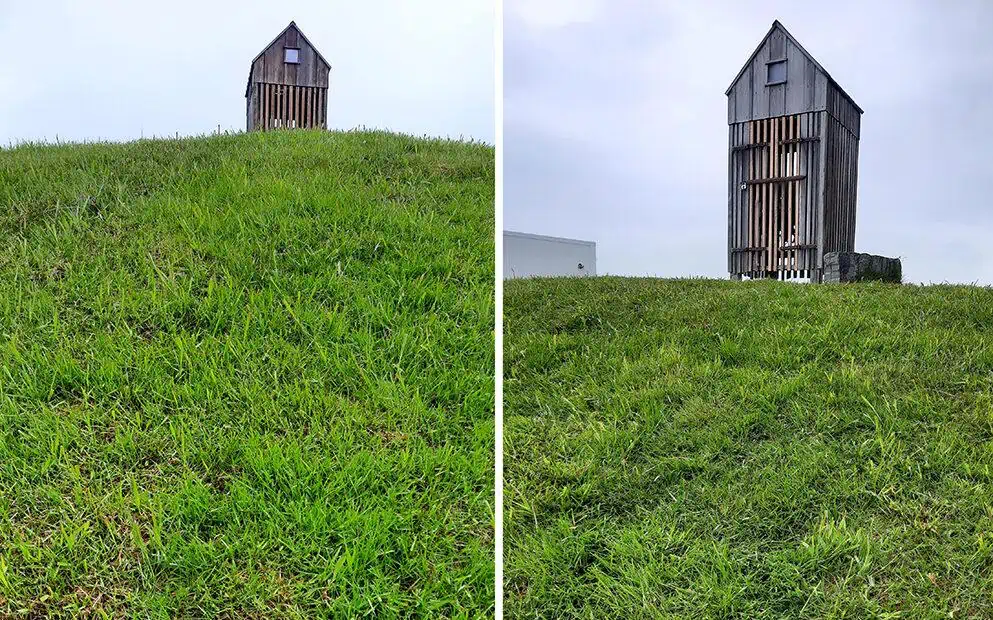
photography by: Omri Westmark
The structure is safely barred to prevent the theft of its content, either by humans or birds, while the gap between the wooden rods provides a clear passage for the Atlantic salty wind to do its job and preserve the hanging slices of fish.
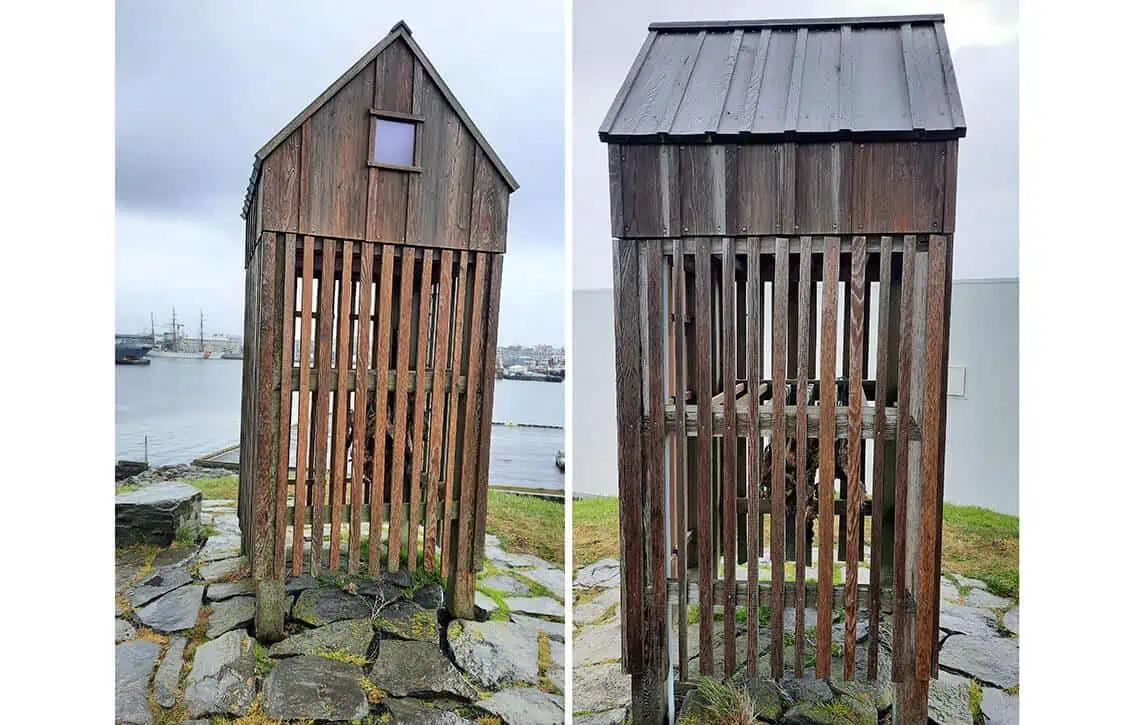
photography by: Omri Westmark
As you have a glimpse inside, you’ll notice the off-putting sight of dried fish-heads. This staple Icelandic food is known as Harðfiskur, and most often made of cod, wolffish or haddock. Firstly, the fish are gutted, thoroughly cleaned and then bathed in brine before hanged outside in a wooden hut at a windy spot.

photography by: Omri Westmark
This modest kennel-shaped structure is far more than just a vestige of an ancient Icelandic tradition, but also a link between the country’s most urban parts and its rural expanses, which unlike most industrialized countries, still play a major role among all echelons of society.

photography by: Omri Westmark
Besides the place’s historic reference, whoever makes it to the top of the mound will be rewarded with spectacular views of the Reykjavik’s skyline.
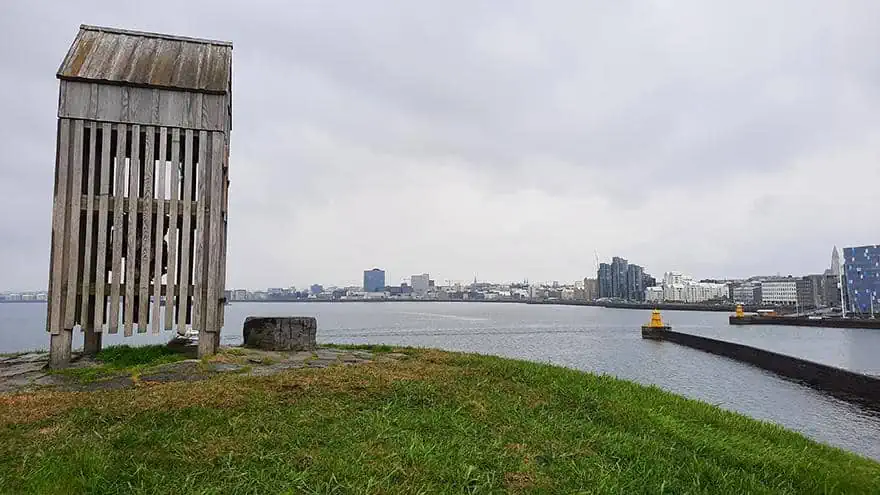
photography by: Omri Westmark
A panoramic view of HB Grandi factory, the harbor, the Atlantic Ocean and the looming skyline of the Icelandic capital.

photography by: Omri Westmark
If you wonder about the name, Þúfa is directly translated as tussock, albeit under certain context it can also mean a small hill.

photography by: Omri Westmark
This semi-spherical hill serves as a stunning scenic spot for visitors who bother making the long way from the downtown, nevertheless, it’s also an eye-catching monument by its own right, as it’s clearly visible from Reykjavik’s Sculpture & Shore Walk, often evoking a great deal of curiosity among the clueless passersby.
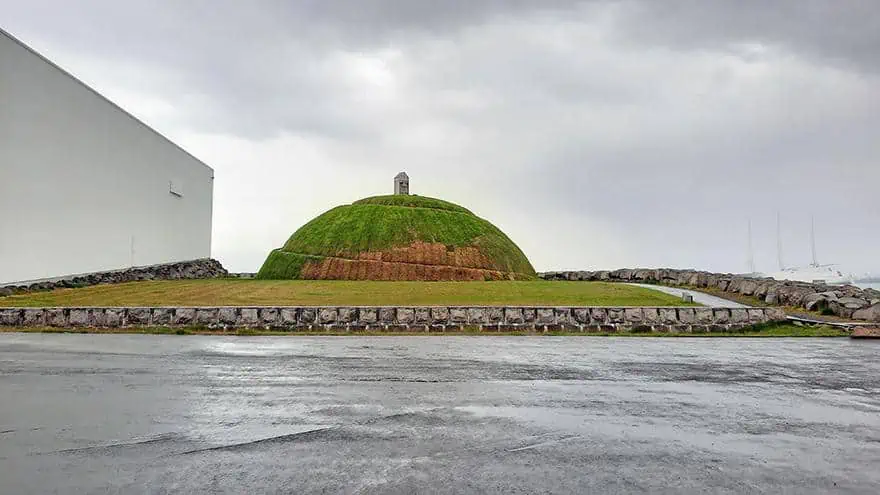
photography by: Omri Westmark